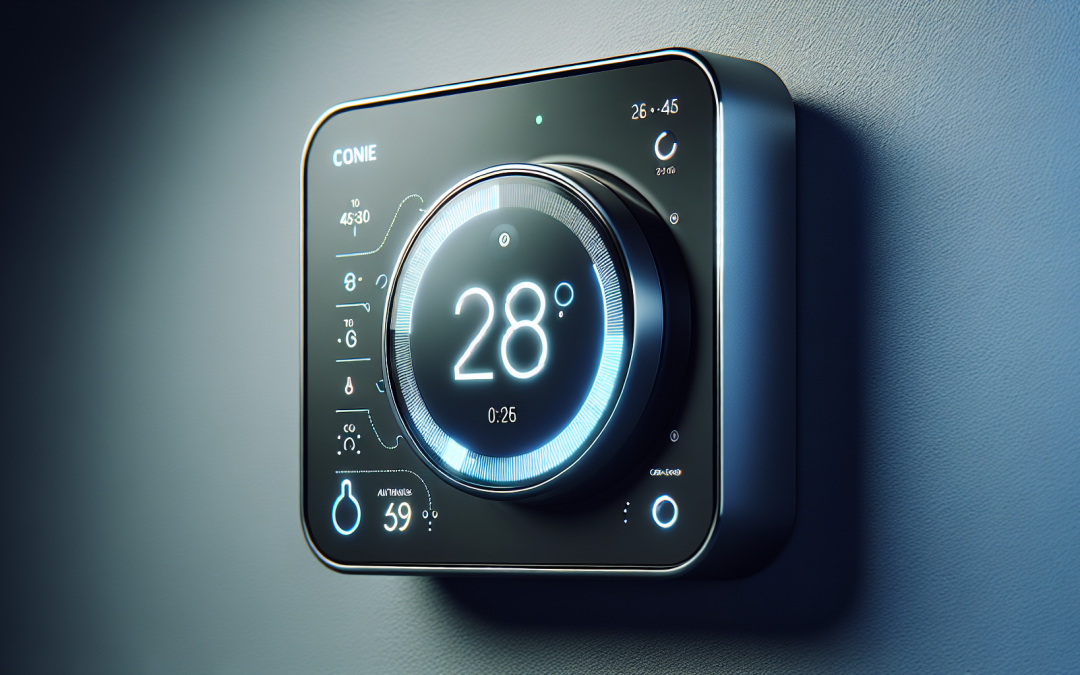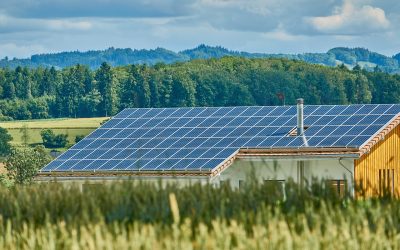Imagine a world where managing your energy usage is as simple as a click of a button. Well, that world is not so far away. With the rise of Energy Management Automation, controlling and optimizing your energy consumption has become easier and more efficient than ever before. From smart thermostats that adjust to your preferences and schedule, to intelligent lighting systems that automatically turn off when not in use, this technology is revolutionizing the way we interact with our energy. In this article, we will explore the benefits and potential of Energy Management Automation, and how it can ultimately save you both money and the environment.
Overview
Energy management automation refers to the use of advanced technology and systems to monitor, control, and optimize energy consumption in various facilities or buildings. This automation enables real-time data collection, analysis, and decision-making to achieve energy efficiency, sustainability, and cost savings. By implementing energy management automation, businesses can track and manage their energy consumption more effectively, identify potential areas of improvement, and make informed decisions to reduce energy waste and environmental impact.
What is energy management automation?
Energy management automation involves the use of software, hardware, and smart devices to automate and streamline energy-related processes. It includes systems for monitoring energy consumption in real-time, using automated controls to adjust energy usage, implementing demand response systems, and utilizing analytics and reporting tools to analyze energy data and optimize energy management strategies.
Importance of energy management automation
Energy management automation is essential for several reasons. Firstly, it helps businesses and organizations reduce their energy costs by identifying energy-saving opportunities, optimizing energy usage, and avoiding unnecessary energy consumption. Secondly, energy management automation contributes to sustainable development and environmental preservation by reducing carbon emissions and promoting energy efficiency. Lastly, it enables businesses to comply with energy regulations, meet sustainability targets, and enhance their reputation as environmentally responsible entities.
Benefits of energy management automation
Implementing energy management automation offers several benefits. One significant advantage is improved energy efficiency, as it allows businesses to monitor and control energy usage effectively. This leads to reduced energy waste and lower operational costs. Energy management automation also provides businesses with more visibility into their energy consumption patterns, helping them identify inefficient processes and implement measures to optimize energy usage. Additionally, automated energy management systems enable businesses to participate in demand response programs, reducing peak electricity demand and potentially earning revenue through load shedding and load shifting.
Key Components
To better understand energy management automation, let’s explore its key components.
Energy monitoring systems
Energy monitoring systems are the foundation of energy management automation. These systems collect real-time energy data from various sources, such as smart meters, sensors, and submeters, and provide instant visibility into energy consumption patterns. With these systems, businesses can accurately monitor their energy usage, identify high-consumption areas, and make data-driven decisions to manage energy consumption effectively.
Automated controls
Automated controls, such as building automation systems (BAS) and smart thermostats, enable businesses to automate energy usage based on predefined settings or schedules. For example, HVAC system automation allows businesses to regulate heating, ventilation, and air conditioning based on occupancy or temperature conditions, optimizing energy usage and comfort. Lighting control automation adjusts lighting levels based on occupancy, natural light availability, or time of day, reducing energy waste without compromising visibility or safety. Power management automation enables businesses to automatically shut down or adjust the power usage of non-critical equipment during periods of low demand or inactivity.
Demand response systems
Demand response systems enable businesses to participate in demand response programs offered by energy utilities. These programs aim to reduce peak electricity demand during periods of high demand by providing incentives for load shedding or load shifting. Load shedding involves temporarily reducing or shifting non-essential electricity usage during peak demand periods, while load shifting involves shifting electricity usage to off-peak hours. Energy management automation enables businesses to automatically respond to demand signals from utilities, helping to balance electricity supply and demand and potentially earning financial rewards for their flexibility.
Analytics and reporting tools
Energy management automation relies on analytics and reporting tools to process and analyze energy data, providing actionable insights for effective decision-making. Data analytics and benchmarking enable businesses to compare their energy performance against industry standards or similar facilities, identifying areas for improvement and setting realistic energy reduction targets. Forecasting and prediction tools analyze historical energy data and external factors to provide accurate energy consumption forecasts, helping businesses plan and optimize energy usage. Energy performance reports provide comprehensive summaries of energy consumption, cost savings, and environmental impact, allowing businesses to track progress and communicate their achievements to stakeholders.
Energy Monitoring Systems
To delve deeper into one of the key components of energy management automation, let’s focus on energy monitoring systems.
Real-time energy data collection
Energy monitoring systems gather real-time energy data from various sources, such as smart meters, submeters, or sensors. These systems continuously monitor energy consumption and provide live updates on energy usage patterns across the facility. Real-time data collection enables businesses to identify excessive energy consumption, detect abnormalities or inefficiencies, and take immediate action to rectify the issues. With accurate and up-to-date energy data, businesses can make informed decisions to optimize energy usage, reduce waste, and achieve energy efficiency objectives.
Data visualization
Energy monitoring systems present energy data in a visually appealing and easily understandable format through data visualization tools. Graphs, charts, and dashboards allow businesses to visualize their energy consumption patterns, trends, and anomalies. This visual representation of energy data simplifies the interpretation of complex information and enables businesses to identify areas of high energy consumption or potential opportunities for improvement at a glance. Data visualization empowers users to make data-driven decisions by providing them with clear and actionable insights into their energy usage.
Alerts and notifications
Energy monitoring systems can be configured to send alerts and notifications when predefined energy consumption thresholds are exceeded or unusual energy patterns are detected. These alerts can be delivered via email, SMS, or through mobile applications, enabling businesses to promptly address energy-related issues. For example, if energy usage exceeds normal levels, the system can automatically send an alert to facility managers, prompting them to investigate potential energy waste or equipment malfunction. Alerts and notifications ensure that energy-related problems are promptly identified and addressed, minimizing energy waste and maximizing efficiency.
Automated Controls
Automated controls are another vital component of energy management automation. Let’s explore some common applications of automation within energy management.
HVAC system automation
HVAC system automation allows businesses to optimize their heating, ventilation, and air conditioning systems’ energy consumption. By integrating intelligent controls and sensors, businesses can automate temperature and airflow regulation based on occupancy, time of day, or weather conditions. For example, the system can adjust temperature setpoints or reduce airflow in unoccupied areas, minimizing energy waste. Furthermore, HVAC system automation can enable businesses to leverage free cooling when outdoor conditions allow, reducing reliance on mechanical cooling systems during favorable weather conditions. By automating HVAC systems, businesses can achieve energy savings without sacrificing comfort, ensuring a cost-effective and sustainable solution.
Lighting control automation
Lighting control automation offers significant energy-saving potential by intelligently managing lighting usage. Businesses can automate lighting controls based on occupancy sensors, daylight availability, or time of day. For instance, lights in unoccupied areas can automatically turn off or dim to reduce energy consumption. In areas with ample natural light, lighting control systems can adjust artificial lighting levels accordingly, ensuring optimal illumination while minimizing energy waste. By automating lighting controls, businesses can save energy, extend the lifespan of lighting fixtures, and create a comfortable and productive environment for occupants.
Power management automation
Power management automation involves automatically controlling the power usage of non-critical equipment during periods of decreased demand or inactivity. Businesses can implement smart power strips or outlet controls that cut off power supply to idle devices, such as computers, printers, or coffee machines, when not in use. By automatically powering down these devices during off-peak hours or after a certain period of inactivity, businesses can reduce standby power consumption and eliminate vampire loads. Power management automation helps businesses achieve significant energy savings without requiring significant changes in behavior or occupancy patterns.
Demand Response Systems
Demand response systems play a crucial role in energy management automation. Let’s examine these systems and their applications.
Load shedding and load shifting
Demand response systems enable businesses to participate in load shedding and load shifting programs during periods of high electricity demand. Load shedding involves reducing or shifting electricity usage during peak demand periods to relieve stress on the grid. For example, businesses can temporarily turn off non-essential equipment or shift their operation to off-peak hours. Load shifting involves scheduling energy-intensive activities to non-peak hours, taking advantage of lower electricity prices. By implementing load shedding and load shifting strategies, businesses can support grid stability, reduce strain on the electrical infrastructure, and potentially earn financial rewards for their participation.
Automated response to demand signals
Demand response systems automate the response to demand signals from energy utilities. These signals indicate periods of high demand or grid stress, and businesses can configure their demand response systems to automatically adjust energy usage based on these signals. For example, during critical peak demand events, businesses can automatically reduce their energy consumption by dimming lights, adjusting HVAC setpoints, or shutting down non-essential equipment. Automated response to demand signals allows businesses to play an active role in managing electricity demand, supporting grid reliability, and potentially earning financial incentives.
Analytics and Reporting Tools
Analytics and reporting tools are essential for leveraging the insights gained from energy management automation. Let’s explore their capabilities.
Data analytics and benchmarking
Data analytics and benchmarking tools analyze energy data collected by energy management automation systems. These tools enable businesses to compare their energy performance against industry standards or similar facilities, highlighting areas for improvement. By analyzing energy consumption patterns, businesses can identify areas of excessive energy usage, detect anomalies, and uncover opportunities for optimizing energy usage. Benchmarking enables businesses to set realistic energy reduction targets, track progress, and motivate continuous improvement.
Forecasting and prediction
Forecasting and prediction tools use historical energy data and external factors like weather patterns or occupancy rates to provide accurate forecasts of future energy consumption. These tools help businesses plan and optimize energy usage based on predicted demand. For example, a forecasting tool can predict high electricity demand on a hot day and recommend pre-cooling strategies or load shedding options. By leveraging forecasting and prediction tools, businesses can proactively manage their energy consumption, minimize energy waste, and optimize their operations accordingly.
Energy performance reports
Energy performance reports summarize energy consumption, cost savings, and environmental impact based on data collected and analyzed by energy management automation systems. These reports provide businesses with a comprehensive overview of their energy management efforts, highlighting successes and areas for improvement. Energy performance reports help businesses track progress towards energy reduction goals, demonstrate the effectiveness of energy management strategies to stakeholders, and support decision-making for future energy optimization initiatives.
Implementation Considerations
When considering the implementation of energy management automation, several factors should be taken into account.
Compatibility with existing systems
It is essential to ensure that energy management automation solutions are compatible with existing systems and technologies in the facility. Integration with building management systems, HVAC systems, lighting controls, or other relevant systems should be carefully planned to achieve seamless operation and maximize the benefits of automation. Compatibility considerations should also extend to communication protocols, data exchange formats, and cybersecurity measures to ensure secure and reliable data transfer between different systems.
Cost and ROI analysis
Implementing energy management automation may involve upfront costs for equipment, software, installation, and training. It is crucial to conduct a thorough cost analysis, including an estimation of potential savings and return on investment (ROI) in energy and operational costs. Businesses should consider factors such as the payback period, lifetime costs, and ongoing maintenance expenses. By evaluating the costs and potential savings, businesses can make informed decisions and prioritize investments in energy management automation.
Integration with smart grid technologies
Energy management automation can be further enhanced by integrating with smart grid technologies. Smart grid technologies enable two-way communication between energy utilities and consumers, facilitating real-time demand response, dynamic pricing, and grid efficiency. Integration with smart grid technologies allows businesses to participate in demand response programs more effectively, leverage time-of-use pricing for energy optimization, and contribute to grid stability. When implementing energy management automation, considering its compatibility with smart grid technologies can provide additional opportunities for energy savings and financial incentives.
Challenges of Energy Management Automation
While energy management automation offers numerous benefits, there are also some challenges that need to be addressed.
Initial investment costs
One of the primary challenges of energy management automation is the initial investment costs associated with purchasing and implementing the necessary hardware, software, and equipment. For some businesses, the upfront costs may be significant, particularly for large-scale implementations or retrofits. It is important for businesses to evaluate and justify these costs by assessing the potential energy and cost savings, as well as other benefits achieved through automation, such as improved comfort, operational efficiency, and environmental impact reduction.
Data security and privacy concerns
As energy management automation relies on the collection and analysis of sensitive energy data, data security and privacy concerns arise. Businesses must ensure that adequate security measures are implemented to protect energy data from unauthorized access, manipulation, or theft. This includes employing encryption techniques, implementing strong access controls, and regularly updating and patching software and systems. Additionally, businesses must comply with data protection regulations and obtain consent from stakeholders whose data is being collected and processed.
Employee resistance and training
Implementing energy management automation often requires changes in processes and behaviors, which can be met with resistance from employees. Employees might be skeptical or hesitant to adopt new technologies or change their routines. To overcome this challenge, businesses should communicate the benefits of energy management automation and involve employees in the implementation process. Providing training and education on the use of automated systems, explaining the impact of energy management on the organization’s goals and the environment, and recognizing the contributions of employees to achieving energy efficiency can help alleviate resistance and increase engagement.
Case Studies
To showcase the effectiveness of energy management automation, let’s explore a few case studies.
Energy Management Automation in Commercial Buildings
A commercial office building in downtown Seattle implemented energy management automation as part of its sustainability initiatives. The building integrated energy monitoring systems to collect and analyze real-time energy consumption data from the HVAC system, lighting, and other electrical equipment. Through data visualization tools and reports, building managers identified areas of excessive energy consumption and implemented automated controls to optimize energy usage based on occupancy and time of day. As a result, the building achieved a 25% reduction in energy consumption, leading to substantial cost savings and improved sustainability performance.
Industrial Applications of Energy Management Automation
A manufacturing plant in Ohio implemented energy management automation to optimize its energy-intensive operations. By integrating energy monitoring systems, the plant was able to track energy consumption at different stages of the production process, identifying opportunities for energy optimization and cost reduction. Automated controls were implemented to optimize the operation of equipment, such as compressors, pumps, and motors, based on demand and energy efficiency considerations. The plant also participated in demand response programs, enabling automated load shedding during peak demand periods. Through energy management automation, the plant achieved a 15% reduction in energy consumption, significantly lowering operational costs and improving overall production efficiency.
Conclusion
Energy management automation is a critical component of achieving energy efficiency, sustainability, and cost savings in various facilities and buildings. By leveraging advanced technology and systems, businesses can monitor, control, and optimize their energy consumption in real-time. Energy management automation provides several benefits, including improved energy efficiency, reduced costs, enhanced sustainability, and compliance with energy regulations. Key components of energy management automation include energy monitoring systems, automated controls, demand response systems, and analytics and reporting tools. While implementation considerations and challenges exist, case studies demonstrate the effectiveness and potential for energy management automation in commercial and industrial settings. The future of energy management lies in automation, as it holds the potential for significant cost and energy savings, as well as contributing to a sustainable energy future. By embracing energy management automation, businesses can pave the way for a greener and more efficient future.










